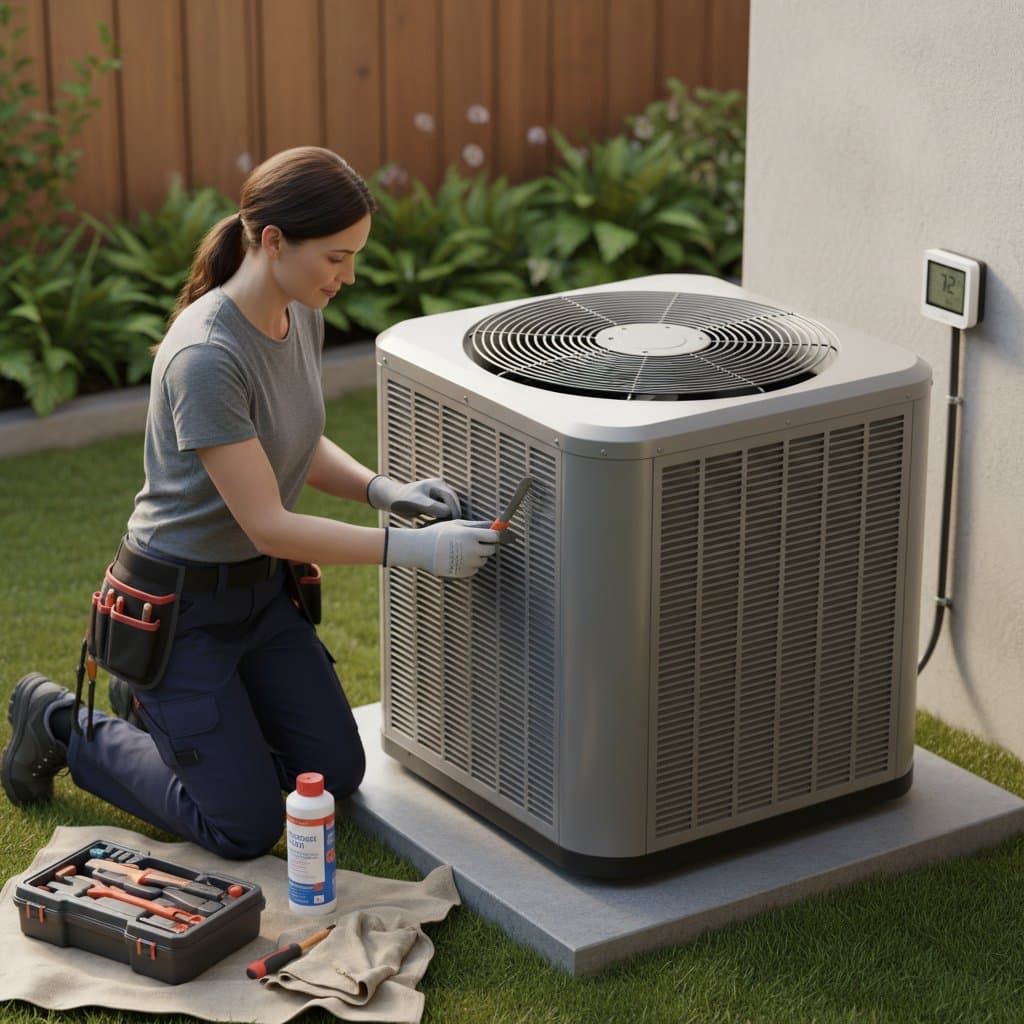Why Prep Your AC Now for Cool 2025 Summers
Summer temperatures demand reliable air conditioning, yet numerous homeowners delay preparation until the initial heatwave reveals system weaknesses. Early intervention guarantees comfort, optimizes efficiency, and provides reassurance as outdoor heat intensifies. A comprehensive pre-summer tune-up averts unexpected failures while enhancing energy use, which results in financial savings and reduced anxiety throughout the season.
Why Early AC Preparation Matters
Air conditioners function like essential home systems that require ongoing attention to deliver optimal results. Accumulation of dust, deterioration of components, or refrigerant deficiencies gradually diminish cooling effectiveness. Conducting inspections and adjustments prior to high-demand periods allows service professionals to resolve minor concerns before they escalate into significant expenses.
Early action also circumvents the typical surge in service requests as warmer weather approaches. Heating, ventilation, and air conditioning providers frequently book appointments well in advance during transitional months. Securing a slot at present enables selection of a suitable date and confirms readiness of the unit exactly when reliance upon it peaks.
Beyond immediate functionality, proactive care contributes to environmental sustainability. Efficient systems consume less electricity, which lowers overall household carbon footprints. Homeowners who prioritize timely maintenance often report noticeable improvements in both performance and long-term value.
Key Benefits of Pre-Summer AC Maintenance
Pre-summer servicing yields multiple advantages that extend from operational reliability to health enhancements. These benefits underscore the value of investing time and resources before the season begins.
1. Improved Efficiency
A meticulously cleaned and calibrated air conditioner operates with greater precision. Obstructed filters or soiled coils compel the unit to exert additional effort, which elevates electricity consumption. Thorough cleaning and precise adjustments facilitate unobstructed airflow and minimize stress on internal mechanisms, often leading to reductions in monthly utility expenses by 10 to 15 percent.
2. Extended Lifespan
Consistent servicing alleviates excessive pressure on critical elements like compressors and fan motors. Such preventive measures can prolong the operational duration of an entire system by several years, postponing the substantial outlay associated with full replacements that average between $3,000 and $7,000.
3. Better Indoor Air Quality
Air ducts and filters frequently harbor particles such as dust, pollen, and pet dander. Professional cleaning or filter replacements enhance circulation and diminish the presence of irritants, which benefits individuals with allergies or respiratory sensitivities. Cleaner air promotes a healthier living environment year-round.
4. Lower Repair Costs
Identifying and correcting subtle problems, including frayed wiring or refrigerant shortages, halts progression to severe malfunctions. For instance, a minor leak addressed early might cost $200 to fix, whereas neglect could result in compressor failure exceeding $1,500. This approach safeguards budgets during peak usage.
5. Consistent Comfort
Properly tuned systems distribute cool air uniformly, eradicating uneven temperatures or drafty areas. Advanced diagnostics ensure balanced operation across multiple rooms, maintaining desired settings without frequent adjustments.
The AC Prep Checklist
Prepare your air conditioner for upcoming demands by adhering to this straightforward checklist, either independently or in collaboration with a certified technician. Each step targets common vulnerabilities to maximize reliability.
- Replace or clean air filters at intervals of one to three months, depending on usage and air quality, to sustain unrestricted airflow.
- Evaluate refrigerant levels using pressure gauges to verify sufficient cooling capacity without overcharging.
- Remove accumulated dirt from condenser and evaporator coils with specialized cleaners to restore heat exchange efficiency.
- Verify thermostat accuracy by comparing readings against a trusted thermometer and recalibrate as necessary.
- Secure all electrical connections to avert intermittent power disruptions or fire hazards.
- Apply lubricant to bearings and motors to minimize operational friction and extend mechanical longevity.
- Run diagnostic tests on controls and sensors to validate seamless startup, cycling, and shutdown sequences.
| Maintenance Type | Average Cost | Potential Annual Energy Savings |
|---|---|---|
| DIY Filter Change | $10–$20 | $50–$100 |
| Professional Tune-Up | $75–$200 | $150–$300 |
| Full System Inspection | $100–$250 | $200–$500 |
This table illustrates how upfront investments compare to long-term gains, based on typical residential units.
DIY vs Professional Tune-Ups
Certain tasks, like filter swaps or vent dusting, fall within the capabilities of many homeowners using basic supplies. These efforts contribute to basic upkeep and immediate improvements. However, professional evaluations delve into complex areas such as refrigerant handling, voltage testing, and duct integrity assessments, which demand licensed expertise and safety equipment.
Relying solely on self-maintenance risks overlooking concealed defects, such as corrosion in hidden pipes or imbalances in airflow distribution. Certified technicians employ diagnostic software and industry standards to certify comprehensive protection, ensuring the system withstands summer rigors without compromise.
When to Schedule Your Service
Optimal timing for air conditioning maintenance occurs during late winter or early spring, well ahead of rising temperatures. This window accommodates thorough repairs, procurement of scarce parts, and simulated performance trials in cooler conditions. Delaying until mild heat emerges often leads to extended queues and suboptimal workmanship under pressure.
Consider regional climate patterns; in areas with abrupt warm spells, aim for completion by March or April. Annual contracts with service providers can streamline scheduling and offer priority access during busy periods.
How to Keep Your AC Running Smoothly All Season
Following the initial servicing, implement ongoing practices to sustain peak condition amid summer demands. Vigilance prevents gradual degradation and maintains the benefits of early preparation.
- Regularly clear vegetation, leaves, or outdoor clutter from the condenser unit to prevent airflow restrictions.
- Employ shades, drapes, or reflective films on windows to block solar heat gain during midday hours.
- Set the thermostat to a moderate level, such as 78 degrees Fahrenheit, and avoid frequent changes to promote stable operation.
- Monitor for atypical sounds, vibrations, or reduced output, and contact professionals promptly for inspections.
Additional habits, like sealing window gaps or using ceiling fans, complement AC performance by reducing overall load.
Building Lasting Summer Comfort
Investing in early air conditioning preparation equips homeowners to face 2025 heat with assurance. This strategy not only curbs expenses and averts disruptions but also fosters a more resilient home environment. Through diligent tune-ups and habitual care, reliable cooling becomes a seamless part of daily life, allowing focus on enjoyment rather than equipment concerns.





